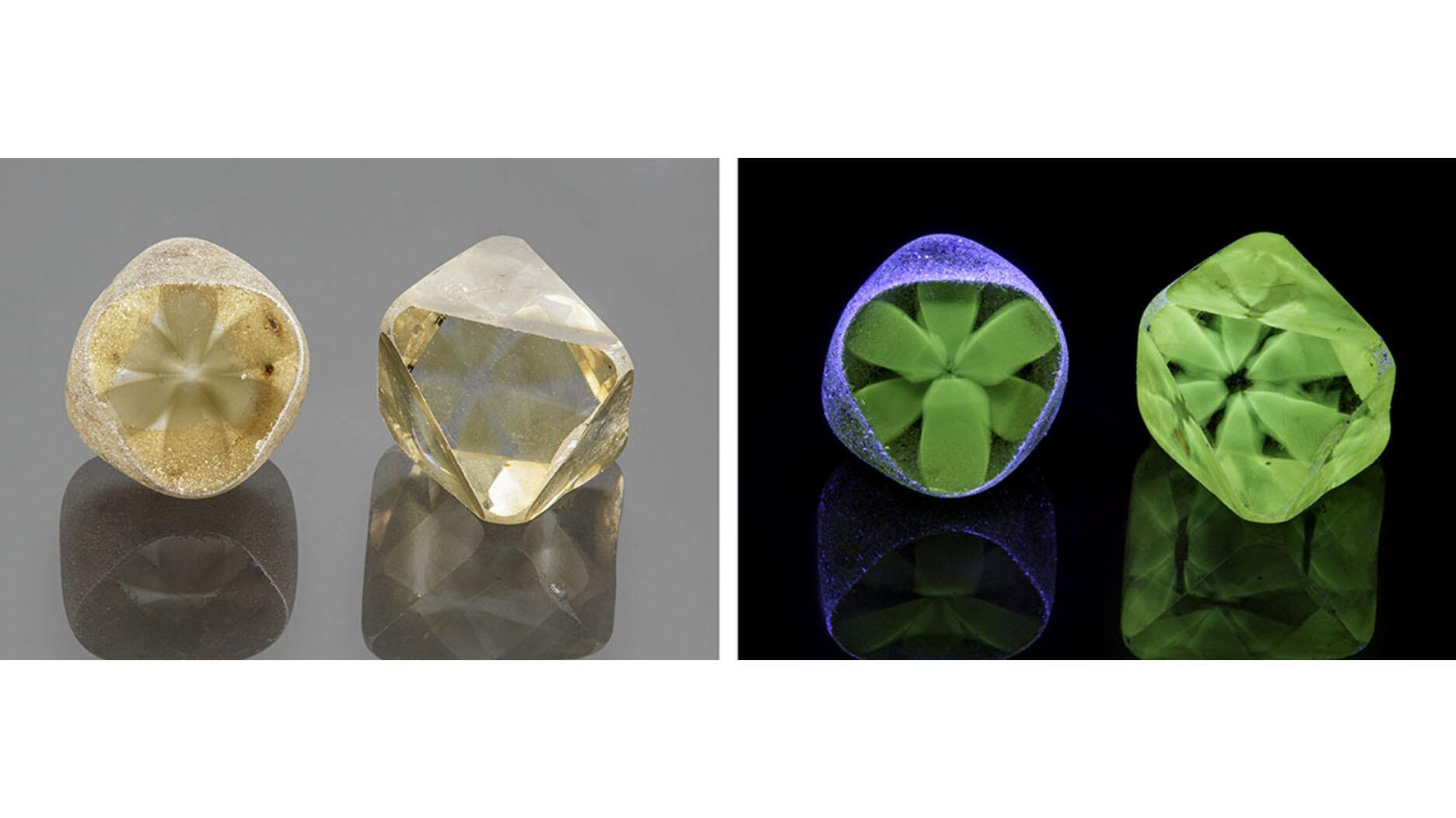State of the Diamond Industry: AI and the Future of Diamond Grading
Gemologists have long used machines in diamond grading but technology has made it possible for them to “learn” how to do it on their own.

A long time ago in a grading lab not far away, Don Palmieri recalls everybody talking about the proverbial “black box”—a mythical, singular instrument that determines a diamond’s carat weight, cut, clarity and color, and spits it back out again with a grading report.
Decades later, the idea of an all-in-one-instrument has morphed from abstract concept into reality, sort of.
“While it was the fantasy of just about everyone in the gemological world [back then], when you fast-forward [to today], we have a lot of black boxes,” notes Palmieri, president and co-founder of the Gem Certification & Assurance Lab (GCAL).
There is no one machine that does it all, but the technology around diamonds and diamond grading has advanced considerably.
Scientists have developed machines to measure a diamond’s light performance and created methods to track stones through the supply chain. There are cameras that take 360-degree pictures and instruments that aid in distinguishing between natural and lab-grown diamonds.
And, there are machines that can grade a diamond’s color without human intervention and even determine clarity—considered the trickiest of the “4Cs” for machines to tackle—that are currently in use by two of the biggest players in the industry, the Gemological Institute of America and Sarine Technologies Ltd.
While the idea of automated grading might be unfathomable to some gemologists, it’s not at all shocking to Palmieri, who has witnessed the evolution of grading technology for decades and knew the industry would get here, someday.
“Though I’ve never been what I would call a technologist, I always realized there was technology; I knew it was there, I knew it was coming. What’s happening right now, today, does not surprise me.
“It’s just sort of like, where have you been? I’ve been waiting for you.”
However, with modern technology comes questions and concerns about how the machines work, their accuracy, and, probably the biggest worry of all: if, in the future, machines are going to grade diamonds, will gemologists find themselves out of a job?
Machine Learning, Explained
To talk about machine grading, it is useful to first understand the concept of machine learning and how it is positioned under the larger umbrella of artificial intelligence, or AI.
AI refers to the field and development of computer systems that can do tasks that require human intelligence.
Though they may not realize it, people utilize artificial intelligence every day, like when they are texting and their smartphone guesses which word they’re typing (known as predictive texting), or when their favorite streaming service “recommends” TV shows or movies they might like.
“The amount of data required for a machine to truly ‘learn’ varies depending on the complexity of the task at hand. In general, the more data that is fed into a machine, the better it will be able to learn and make predictions.”— Iu Ayala, Gradient Insight
Scientists developed the first AI programs in the 1950s, led by individuals like British mathematician Alan Turing, creator of the famed Turing Test, and IBM computer scientist Arthur Samuel, who is widely credited with coining the phrase “machine learning.”
Machine learning is a subset of AI that involves developing algorithms and statistical models that enable computer systems to learn from data without constantly having to be reprogrammed, explains Iu Ayala, founder and CEO of data science consultancy firm Gradient Insight.
These algorithms can identify patterns and make decisions based on the data that’s fed into them.
They can be a valuable tool for a wide range of tasks, including image recognition, language translation, fraud detection and diamond grading.
The Final Frontier
For three of the 4Cs, the GIA-developed measures of diamond quality that have been in use since the 1940s, using machines to grade diamonds is nothing new.
Carat weight involves the simplest of machines—a scale—while GIA invented the first system to measure proportions for cut grade, the ProportionScope, in 1967. The technology has evolved since then, including the introduction of Sarine’s DiaMension system in 1992, which automated the process.
“No one grades cut manually. It’s all done through technology,” Sarine CEO David Block says.
Gemologists at GIA have been using the Colorimeter to grade color since the 1950s. The technology has advanced to the point where the Colorimeter, which is used only in GIA labs, is able to grade the vast majority of diamonds without human intervention.
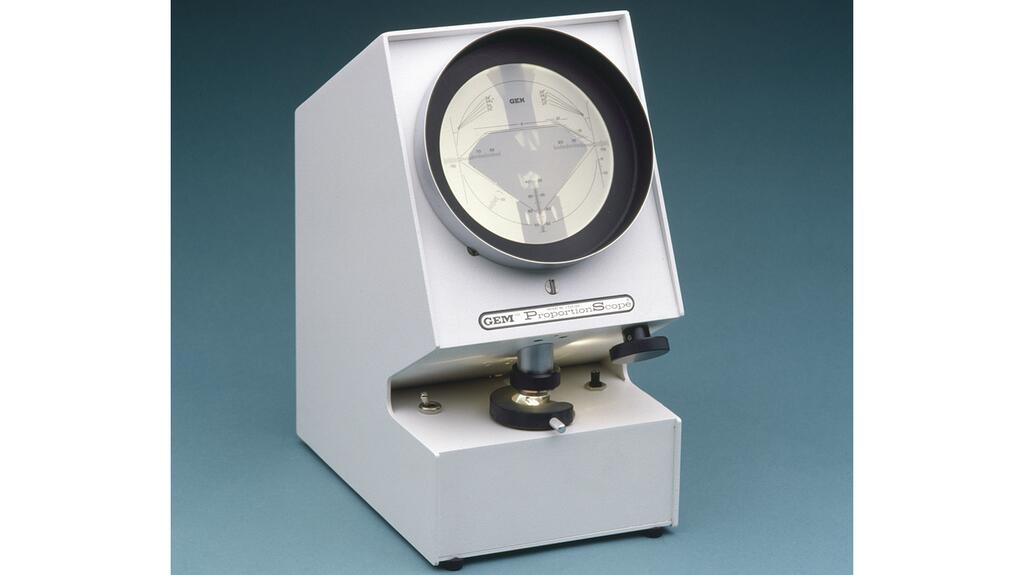
In recent years, Sarine and GIA began investigating bringing so-called smart technology into the fold, particularly for clarity grading, the element of diamond quality GIA Executive Vice President and Chief Laboratory and Research Officer Tom Moses has described as the “last frontier” for machine grading.
Block says Sarine developed the first automated color and clarity grading systems in 2016 while GIA started research with IBM on automated clarity grading in earnest in 2017/2018.
In order to utilize this type of automated technology, a company has to have a large quantity of data to feed into the machine, as machines “learn” in much the same way people do—through repetition and memorization, Ayala, the AI expert, notes.
“The amount of data required for a machine to truly ‘learn’ varies depending on the complexity of the task at hand,” he says. “In general, the more data that is fed into a machine, the better it will be able to learn and make predictions.”
For Sarine, gathering the requisite amount of data meant opening grading labs, one in Israel and one in India, in 2018.
The company asked clients to send diamonds with GIA reports to the labs. It then cross-checked the machine’s grades against those of its own human graders as well as the GIA reports that accompanied each stone.
Block says over a two-year period, Sarine fed “tens of thousands of diamonds” into its color and clarity machines, essentially teaching them what a D-color diamond looks like versus a G, H or I stone or, in the case of clarity, how a VS1 differs from a VS2, or an SI1 differs from an SI2.
As a wider range of diamonds was tested, Sarine took the data and fed it into its machine-learning algorithms, which delivered better and better results as the data sets increased in size—just as humans tend to improve at tasks with more information and more practice.
“Machines are more accurate than people, period. They are definitely more consistent [too].”— David Block, Sarine
Along the way, Block says Sarine also analyzed the results of stones that had grading discrepancies when compared with Sarine’s graders and/or the GIA reports, using that data to further improve the grading algorithm.
After evaluating so many diamonds, Sarine Clarity and Sarine Color learned to grade diamonds and, according to Block, they do it better than people can.
A machine never has an off day because, for example, it was out late last night and had too many drinks or it had an argument with its spouse before work, and it’s not susceptible to immoral temptations, like bribes.
“Machines are more accurate than people, period. They are definitely more consistent [too],” says Block.
To develop its automated clarity grading instrument, GIA worked with IBM, the former employer of aforementioned AI pioneer Arthur Samuel.
The lab publicly announced it was testing the technology at its New York and Carlsbad, California, facilities in 2020.
Today, automated clarity grading instruments are in use at every GIA lab worldwide and are working in parallel with human graders, Senior Vice President and Chief Operating Officer Pritesh Patel says.
Like with Sarine’s machines, the GIA/IBM-developed instrument learned by looking at a lot of different diamonds.
GIA “trained” its automated clarity grading instrument, which does not have a specific name, using tens of thousands of images combined with input from expert diamond graders. The lab said it took several months of work before the system was even ready to be beta-tested.
Over time, the automated instrument learned how to look for certain types of inclusions, such as feathers, crystals, and needles, and what clarity grade those inclusions, or combinations of inclusions, equate to in a diamond.
For both companies, the teaching continues. Both Sarine and GIA say they keep feeding data into their respective automated grading equipment, allowing the machines’ “knowledge” to grow.
Visions of the Future
For Sarine, improving accuracy and consistency wasn’t the only objective behind automating color and clarity grading. The company believes its technology also can create a more efficient supply chain by allowing for automated, cloud-linked grading at diamond manufacturing facilities.
Block says Sarine is putting its technology in factories right now, so once a diamond is cut and polished, it can be AI-graded by the Sarine Color and Sarine Clarity machines immediately and receive a grading report in a day.
After testing the machines at its labs and on-site at select clients’ factories, Sarine Color and Sarine Clarity began rolling out to suppliers in India at the end of 2022.
Indian suppliers will remain the focus of the rollout in 2023, as will GCAL.
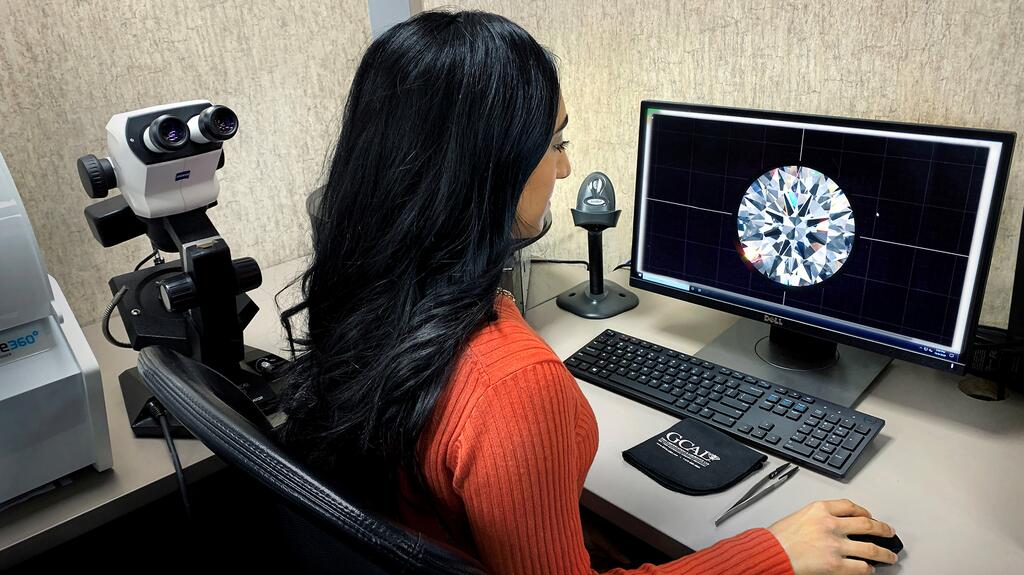
In January, news broke that Sarine would be acquiring a majority stake in GCAL, which is headed by Don along with his wife, Pamela Palmieri, and their son, Angelo Palmieri.
(Editor’s note: Sarine’s acquisition of GCAL has now been finalized.)
Block is straightforward about why he wanted to buy the lab.
While Sarine’s various instruments are used in labs worldwide, it doesn’t have widespread name recognition as a lab. GCAL, which has been around since 2001, does, particularly in the U.S. market.
For GCAL’s owners, teaming up with a larger partner gives it the ability to expand overseas without sacrificing quality or giving up a central tenet of its business—the money-back guarantee that comes with each of its grading certificates.
Angelo says GCAL first started having conversations with Sarine in 2016, when it launched Sarine Color and Sarine Clarity.
He says all analytical processes at GCAL currently are mechanized, except color and clarity grading.
The Sarine Color and Sarine Clarity machines were shipped to GCAL headquarters in New York in late February/early March and were expected to be fully operational and in use by press time, though that does not mean all GCAL grading will become automated overnight.
“For us, what we’ve always talked about is, this is going to be an incremental approach to implementation,” Angelo says. “We’re not going to throw out everything we’ve been doing for 22 years.”
The machines, essentially, will become one of the multiple graders who look at every diamond that comes into the GCAL lab. “Nothing is just going to blindly fly out the door without human involvement,” he says.
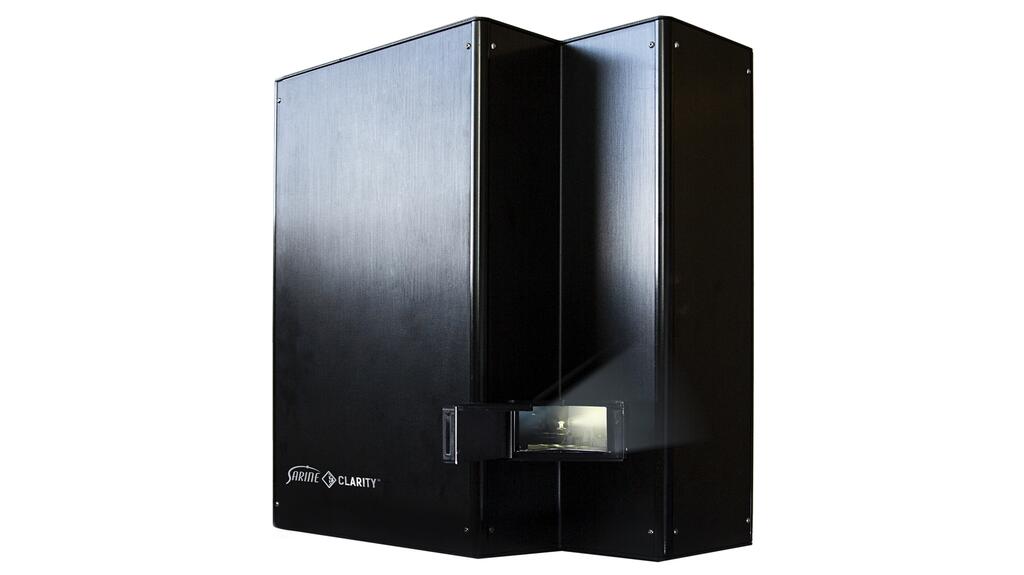
After a certain point in time, which Angelo says is, “not that far off,” GCAL envisions placing the automated color and clarity grading machines in their customers’ factories, where they could give diamonds a “pre-grade” to provide an expectations baseline for when the stone is submitted to GCAL.
For now, there is one big, shiny wrench in the plan when it comes to machine grading diamonds in factories without lab intervention: man-made diamonds.
At GIA, differentiating smaller natural and lab-grown diamonds from each other, and from diamond simulants, is automated as part of its Melee Screening Service.
Any diamonds that GIA’s instruments, including its iD100 screening device, refer for further testing have to be examined by scientists and technicians, who make the final call.
Pritesh pushes back on the idea of grading diamonds exclusively in a factory, not only because of the need to distinguish between lab-grown and natural but also because of the need to test for various treatments.
Moses adds, “Treatments pose a significant reputational risk to the industry; GIA can detect known treatments and identify new methods because of the expertise of our research team and the sophisticated instrumentation available to us to examine millions of diamonds every year.
“The identification of new treatments and the detection of known methods is at the heart of GIA’s mission. Without the work we do, the industry risks losing consumer confidence.”
GIA, however, does envision another future, one that involves an automated diamond grading system that is an evolution of its melee sorting system, but with “significant enhancements” to accommodate larger diamonds.
“That type of thing is going to be available in the very near future,” Pritesh says, while Moses adds jokingly, “I’m an old man and it’ll happen for me to see.”
For Sarine’s part, Block acknowledges that, as of right now, any tests used to determine if a diamond is lab-grown or natural still need to happen in a lab, but Sarine is working on machine-learning technology to both distinguish between man-made and natural diamonds and to identify treatments.
When they will be ready is unknown.
“That’s something we are working on and I can’t give a timeline,” he says.
Making, Not Taking, Jobs
From 1968’s “2001: A Space Odyssey” to “M3GAN,” which came out in 2022, culture has long reflected how the human fascination with artificial intelligence is co-mingled with fear.
We are collectively captivated by the idea of machines stepping into human roles, but also worried about what might happen if the whole thing goes haywire.
While there’s no threat of an automated grader blowing a fuse and attempting to take over the lab, there are legitimate concerns about what the advent of automated grading could mean for people who make their living grading diamonds.
All the sources interviewed for this story said the same thing when asked about this anxiety, that technology does not replace people; it just changes what people do.
Both Block and Moses note their respective companies’ ranks have swelled over the years, despite all the technology added along the way.
Block says people confronted him with the question of potential job losses 15 years ago when Sarine introduced its rough diamond planning technology software in India, called Advisor.
Back then, there were a few thousand cleavers who mostly did their work sitting on the floor in un-air-conditioned offices, he says.
Today, close to 100,000 highly trained personnel in India use Sarine’s planning and manufacturing technology, and they work in environments that are cleaner, more comfortable, and more high-tech.
In 2019, Sarine opened a training school in India, which has since provided advanced training to thousands of people who had never worked on a computer before, Block adds.
“People are always afraid of technology replacing people,” he says. “I think technology changes what people do. It doesn’t replace people.”
“I can’t see the future but I can look at the past and learn from that,” he concludes. “Technology in the diamond industry has only created more jobs.”
“I think technology changes jobs. It also allows people to do more creative or more efficient jobs while the more rudimentary jobs are done by machine.” — Angelo Palmieri, GCAL
Moses says when he started at GIA in 1977, the lab employed fewer than 100 people. Today, its headcount approaches 4,000 worldwide, with most of its workforce employed in labs.
Both he and Pritesh think the automation of clarity grading will free up the lab to focus more resources on areas such as treatment detection, grading diamonds already set into jewelry, and identifying the thousands of lab-grown diamonds that are going to be circulating through the market in coming years.
Moses also noted that automation in another area, melee grading, will allow the lab to examine “millions” more stones than it is able to today.
“That, to me, is the very exciting part—to be able to handle and touch more stones and create new skill sets,” he says.
Angelo and Don agree.
With the implementation of automated color and clarity grading, they envision a GCAL that’s bigger, not smaller.
“I think technology changes jobs. It also allows people to do more creative or more efficient jobs while the more rudimentary jobs are done by machine,” Angelo says.
The Latest

Said to be the first to write a jewelry sales manual for the industry, Zell is remembered for his zest for life.
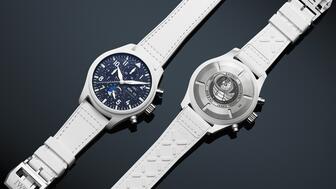
The company outfitted the Polaris Dawn spaceflight crew with watches that will later be auctioned off to benefit St. Jude’s.

A buyer paid more than $100,000 for the gemstone known as “Little Willie,” setting a new auction record for a Scottish freshwater pearl.

Supplier Spotlight Sponsored by GIA.

Anita Gumuchian created the 18-karat yellow gold necklace using 189 carats of colored gemstones she spent the last 40 years collecting.


The giant gem came from Karowe, the same mine that yielded the 1,109-carat Lesedi La Rona and the 1,758-carat Sewelô diamond.

The three-stone ring was designed by Shahla Karimi Jewelry and represents Cuoco, her fiancé Tom Pelphrey, and their child.

Supplier Spotlight Sponsored by GIA

The Manhattan jewelry store has partnered with Xarissa B. of Jewel Boxing on a necklace capsule collection.

Acting as temporary virtual Post-it notes, Notes are designed to help strengthen mutual connections, not reach new audiences.

The jewelry historian discusses the history and cultural significance of jewelry throughout time and across the globe.

From fringe and tassels to pieces that give the illusion they are in motion, jewelry with movement is trending.

The designer and maker found community around her Philadelphia studio and creative inspiration on the sidewalks below it.

The change to accepted payment methods for Google Ads might seem like an irritation but actually is an opportunity, Emmanuel Raheb writes.

The industry consultant’s new book focuses on what she learned as an athlete recovering from a broken back.

The fair will take place on the West Coast for the first time, hosted by Altana Fine Jewelry in Oakland, California.

Hillelson is a second-generation diamantaire and CEO of Owl Financial Group.

Submissions in the categories of Jewelry Design, Media Excellence, and Retail Excellence will be accepted through this Friday, Aug. 23.


Known as “Little Willie,” it’s the largest freshwater pearl found in recent history in Scotland and is notable for its shape and color.

Clements Jewelers in Madisonville cited competition from larger retailers and online sellers as the driving factor.

The gemstone company is moving to the Ross Metal Exchange in New York City’s Diamond District.

Most of the 18th century royal jewelry taken from the Green Vault Museum in Dresden, Germany, in 2019 went back on display this week.

The Pittsburgh jeweler has opened a store in the nearby Nemacolin resort.

With a 40-carat cabochon emerald, this necklace is as powerful and elegant as a cat.

The Erlanger, Kentucky-based company was recognized for its reliability when it comes to repairs and fast turnaround times.

Unable to pay its debts, the ruby and sapphire miner is looking to restructure and become a “competitive and attractive” company.

The trend forecaster’s latest guide has intel on upcoming trends in the jewelry market.













